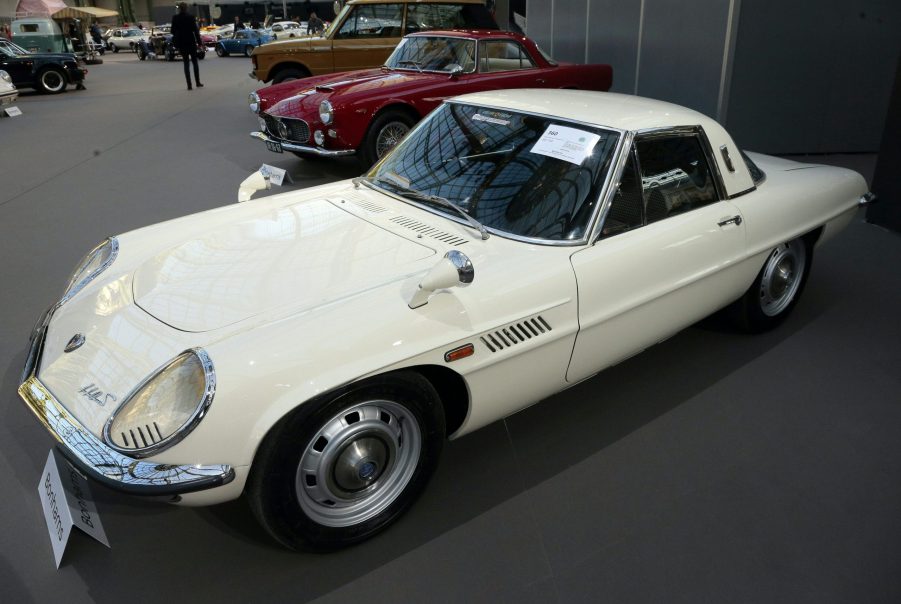
These Are the 6 Most Influential Japanese Cars Ever Made
Cars today are very similar. They follow the same design principles and feature much of the same technology. The technology, engineering, and designs have been refined over the years to produce more reliable, more efficient, and more comfortable vehicles. Those characteristics often come at the cost of innovation. Tried and true technology is more reliable than experimental ideas.
However, occasionally a vehicle comes along that changes the game. It may bring an innovative design, groundbreaking technology, or new manufacturing techniques. These vehicles, in turn, influence the entire automotive industry.
Many vehicles from Europe and America have been hugely influential, but today, we will look at the six most influential Japanese cars ever made.
The Toyota Corolla – 1966

The Toyota Corolla is influential for its popularity. Initially introduced in Japan in 1966, the compact, rear-wheel-drive sedan provided reliable transportation at an affordable price with enough space to accommodate a family. Those attributes have led it to become the best-selling car of all time, with over 50 million sold.
It would seem those humble principles like affordability, reliability, and utility should not be innovative, but the Corolla proved that this formula works and that car buyers want it. The Corolla directly influenced the creation of the Honda Civic, Volkswagen Golf, and countless other compact cars. Toyota showed that the car could be fuel-efficient and reliable at a time when American cars were getting larger, less efficient, and less reliable.
The Mazda 110 S Cosmo – 1967

Mazda has always gone its own way in building automobiles. It seldom follows existing trends and technology and chooses to experiment with different designs, engines, and technology. The Cosmo is the car that established Mazda as an innovator and outside-the-box thinker.
The 110S Cosmo is a two-door sports car with a tiny 982 cc two-rotor Wankel engine. It cost as much as a new Corvette but became the launchpad for Mazda’s Wankel engine technology. This car is the great-grandfather of the legendary RX-7.
The Cosmo proved Wankel engine technology and subsequent versions would directly influence Chevrolet, with the Aerovette 4-Rotor prototype and the Mercedes-Benz C111 4-Rotor prototype. The Cosmo’s innovative use of technology prompted many manufacturers to experiment with new ideas.
The Mazda MX-5 Miata – 1989

The Mazda MX-5 Miata is a car that needs no introduction. It single-handedly revived the entire roadster segment and has become the default convertible sports car of choice. There is a reason why many people say, “Miata is always the answer.”
Mazda used the British sports car formula of lightweight, small size, and lively engine to create a modern roadster that was incredibly good to drive and extremely reliable. When it arrived in 1989, there were almost no small roadsters on the market. It revived the roadster segment, won every award there is to win, and prompted manufacturers to introduce their own roadsters.
The Nissan Skyline GT-R R32 – 1989
The Nissan Skyline GT-R was first introduced in 1969 as a four-door sedan. GT-R stands for Gran Turismo Racing, and the car was always destined for racing.
In 1989, Nissan introduced the third-generation GT-R, known as the R32. Powered by a twin-turbocharged 2.6-liter inline six-cylinder engine and making use of a sophisticated all-wheel drive system, the R32 GT-R would dominate the world of Touring Car racing through the early 1990s.
The GT-R’s influence is extensive. The level of technology, engineering, and performance changed how sports and supercars evolved and developed. It made European and American manufacturers take notice and up their game to compete with the mighty Nissan GT-R.
The Toyota RAV4 – 1994

Before the Toyota RAV4 came along, there were plenty of small off-road capable vehicles. These include the Suzuki Samurai and Jeep Wrangler. The Samurai and Wrangler, and others in the segment, prioritized ruggedness and utility over all else. The RAV4 came along and changed how we think about small SUVs.
The RAV4 debuted in 1994 and combined the efficiency of a small car with the space and utility of an SUV. This effectively created the crossover segment. This proved immensely popular, and the RAV4 now stands as the best-selling SUV in the world.
The Toyota Prius – 1997

Two years ahead of any rival, the Toyota Prius created the hybrid vehicle model that has become the norm today. The Prius, when it debuted in 1997, foreshadowed the hybrid and EV changes to the automotive industry.
It may not be the best-looking vehicle ever created, but it single-handedly influenced the entire automotive industry and proved a large market for hybrid cars.
Many Japanese cars have influenced the automotive industry, but few have had as significant an impact as the six listed above. Each one has set in motion several industry, technology, and consumer trends that continue today.
It’s hard to imagine a world without the Mazda Miata or Nissan GT-R. Would the automobile industry be in the same place without the introduction of the Toyota Prius?
We may not be able to predict the next game-changing automobile, but we can look back at some that did. These six Japanese cars deserve their place in history for what they accomplished in the automotive industry.


